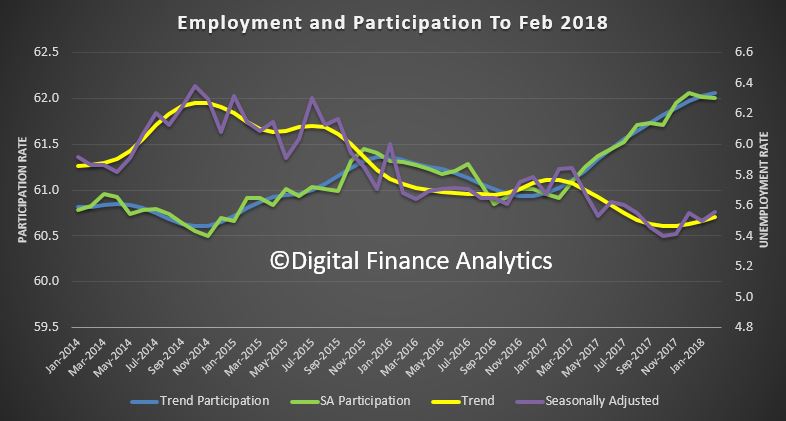According to latest figures released by the Australian Bureau of Statistics (ABS), the seasonally adjusted unemployment rate increased to 5.6 per cent and the labour force participation rate increased by less than 0.1 percentage points to 65.7 per cent. The number of persons employed increased by 18,000 in February 2018.
The preferred monthly trend unemployment rate remained steady at 5.5 per cent in February 2018,
“While the unemployment rate remained steady, the underemployment rate decreased by 0.1 percentage points to 8.3 per cent over the quarter, and is now at its lowest point since November 2015,” the Chief Economist for the ABS, Bruce Hockman, said.
Over the past year, the trend underutilisation rate, which includes both unemployment and underemployment, decreased by 0.6 percentage points to 13.8 per cent.
Employment and hours
Monthly trend full-time employment increased for the 16th straight month in February 2018. Full-time employment grew by a further 8,000 persons in February, while part-time employment increased by 12,000 persons, underpinning a total increase in employment of 19,000 persons.
“Full-time employment has now increased by around 293,000 persons over the past year, and makes up the majority of the 400,000 increase in employment,” Mr Hockman said.
Over the past year, trend employment increased by 3.3 per cent, which is above the average year-on-year growth over the past 20 years (1.9 per cent).
The trend monthly hours worked decreased slightly, by 1.4 million hours (0.1 per cent), with the annual figure continuing to show strong growth (2.7 per cent).The labour force participation rate increased to 65.7 per cent, the highest it has been since December 2010. The female labour force participation also increased, to a further historical high of 60.6 per cent.
States and Territories
Over the past year, the states and territories with the strongest annual growth in trend employment were the ACT (4.7 per cent) Queensland (4.6 per cent) and New South Wales (3.9 per cent).

